Modeling comparative cost-effectiveness of SARS-CoV-2 vaccine dose fractionation in India
- PMID: 35210596
- PMCID: PMC9117137
- DOI: 10.1038/s41591-022-01736-z
Modeling comparative cost-effectiveness of SARS-CoV-2 vaccine dose fractionation in India
Abstract
Given global Coronavirus Disease 2019 (COVID-19) vaccine shortages and inequity of vaccine distributions, fractionation of vaccine doses might be an effective strategy for reducing public health and economic burden, notwithstanding the emergence of new variants of concern. In this study, we developed a multi-scale model incorporating population-level transmission and individual-level vaccination to estimate the costs of hospitalization and vaccination and the economic benefits of reducing COVID-19 deaths due to dose-fractionation strategies in India. We used large-scale survey data of the willingness to pay together with data of vaccine and hospital admission costs to build the model. We found that fractional doses of vaccines could be an economically viable vaccination strategy compared to alternatives of either full-dose vaccination or no vaccination. Dose-sparing strategies could save a large number of lives, even with the emergence of new variants with higher transmissibility.
© 2022. The Author(s).
Conflict of interest statement
B.J.C. consults for AstraZeneca, GlaxoSmithKline, Moderna, Pfizer, Roche and Sanofi Pasteur. B.J.C. is supported by the AIR@innoHK program of the Innovation and Technology Commission of the Hong Kong Special Administrative Region Government. All other authors declare no competing interests.
Figures


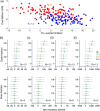
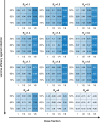
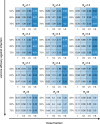
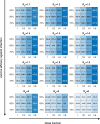
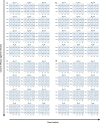
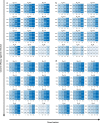
Similar articles
-
COVID-19 pandemic dynamics in India, the SARS-CoV-2 Delta variant, and implications for vaccination.medRxiv [Preprint]. 2021 Nov 22:2021.06.21.21259268. doi: 10.1101/2021.06.21.21259268. medRxiv. 2021. Update in: J R Soc Interface. 2022 Jun;19(191):20210900. doi: 10.1098/rsif.2021.0900. PMID: 34845460 Free PMC article. Updated. Preprint.
-
Cost effectiveness of fractional doses of COVID-19 vaccine boosters in India.Med. 2023 Mar 10;4(3):182-190.e3. doi: 10.1016/j.medj.2023.02.001. Epub 2023 Feb 13. Med. 2023. PMID: 36827972 Free PMC article.
-
Modeling the potential economic benefits of an oral SARS-CoV-2 vaccine during an outbreak of COVID-19.BMC Public Health. 2022 Sep 22;22(1):1792. doi: 10.1186/s12889-022-14148-y. BMC Public Health. 2022. PMID: 36131266 Free PMC article.
-
COVID-19: From emerging variants to vaccination.Cytokine Growth Factor Rev. 2024 Apr;76:127-141. doi: 10.1016/j.cytogfr.2023.11.005. Epub 2023 Dec 9. Cytokine Growth Factor Rev. 2024. PMID: 38135574 Review.
-
Risk of Second Allergic Reaction to SARS-CoV-2 Vaccines: A Systematic Review and Meta-analysis.JAMA Intern Med. 2022 Apr 1;182(4):376-385. doi: 10.1001/jamainternmed.2021.8515. JAMA Intern Med. 2022. PMID: 35188528 Free PMC article.
Cited by
-
A Review on Immunological Responses to SARS-CoV-2 and Various COVID-19 Vaccine Regimens.Pharm Res. 2022 Sep;39(9):2119-2134. doi: 10.1007/s11095-022-03323-w. Epub 2022 Jul 1. Pharm Res. 2022. PMID: 35773445 Free PMC article. Review.
-
Immunogenicity, efficacy, and safety of SARS-CoV-2 vaccine dose fractionation: a systematic review and meta-analysis.BMC Med. 2022 Oct 25;20(1):409. doi: 10.1186/s12916-022-02600-0. BMC Med. 2022. PMID: 36284331 Free PMC article.
-
Optimizing COVID-19 vaccination programs during vaccine shortages.Infect Dis Model. 2022 Mar;7(1):286-298. doi: 10.1016/j.idm.2022.02.002. Epub 2022 Feb 25. Infect Dis Model. 2022. PMID: 35233475 Free PMC article.
-
Safety and immunogenicity of fractional COVID-19 vaccine doses in Nigerian adults: A randomized non-inferiority trial.Sci Rep. 2025 Jul 29;15(1):27614. doi: 10.1038/s41598-025-06536-2. Sci Rep. 2025. PMID: 40730836 Free PMC article. Clinical Trial.
-
A randomized clinical trial of a booster dose with low versus standard dose of AZD1222 in adult after 2 doses of inactivated vaccines.Vaccine. 2022 Apr 20;40(18):2551-2560. doi: 10.1016/j.vaccine.2022.03.036. Epub 2022 Mar 24. Vaccine. 2022. PMID: 35341647 Free PMC article. Clinical Trial.
References
-
- COVID-19 Dashboard by the Center for Systems Science and Engineering (CSSE) at Johns Hopkins University (JHU). https://gisanddata.maps.arcgis.com/apps/opsdashboard/index.html#/bda7594...
-
- Zimmer, C., Corum, J., Wee, S.-L. & Kristoffersen, M. Coronavirus Vaccine Tracker. The New York Timeshttps://www.nytimes.com/interactive/2020/science/coronavirus-vaccine-tra...
-
- Low & middle income. World Bank Group Development Data Group. https://data.worldbank.org/country/XO
Publication types
MeSH terms
Substances
LinkOut - more resources
Full Text Sources
Medical
Miscellaneous

